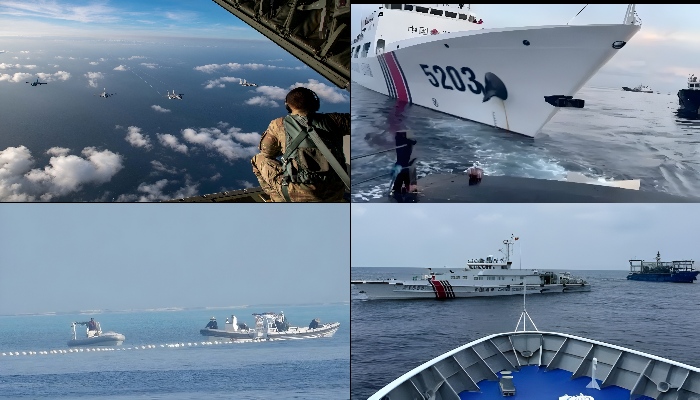Table of Contents
Introduction Of Philippines China South China Sea:
The Philippines-China South China Sea a vital maritime region, has become a focal point for heightened geopolitical tensions, leading to a complex relationship between the Philippines and China. This investigation delves into historical origins, present-day complexities, and various facets shaping their dynamic in the South China Sea. Unraveling intricate layers, this article aims to shed light on the complexities defining this multifaceted geopolitical terrain.
Historical Echoes:
The historical narrative between the Philippines and China resonates with threads of trade, cultural exchanges, and diplomatic relations. Yet, the South China Sea has become a crucible, testing the resilience of their historical connections. At its core lies China’s expansive territorial claims, encapsulated in the infamous Nine-Dash Line, marking a departure from the shared history of cooperation.
Territorial Chessboard:
The South China Sea serves as a battleground for competing claims over islands and maritime territories, weaving a narrative of tension between the Philippines and China. As a Southeast Asian nation, the Philippines finds itself at odds with China’s sweeping claims. The strategic importance of these waters amplifies the complexity of the disputes, as both nations fervently assert their sovereignty over specific areas, creating a geopolitical chessboard with high stakes.
Arbitral Tribunal Ruling:
In a watershed moment in 2016, the Permanent Court of Arbitration in The Hague ruled in favor of the Philippines, delivering a blow to China’s historical claims by invalidating the Nine-Dash Line. This legal triumph provided the Philippines with a robust foundation for its claims. However, China’s reluctance to acknowledge or adhere to the decision perpetuates maritime tensions, adding a unique layer to the ongoing narrative.
Economic Seascape:
Beyond territorial disputes, the South China Sea holds economic significance as a crucial maritime trade route, a bountiful fishing ground, and a potential source of oil and natural gas. The Philippines, heavily reliant on the sea for economic sustenance, grapples with the challenge of safeguarding its interests amidst China’s expanding influence, creating a distinctive economic seascape shaped by competing interests.
Diplomatic Choreography:
Diplomacy emerges as a key player in the intricate dance between the Philippines and China. Both nations, alongside other claimant states, engage in a diplomatic waltz through regional platforms like the Association of Southeast Asian Nations (ASEAN). The ongoing efforts to establish a Code of Conduct in the South China Sea represent a unique choreography aimed at mitigating conflict risks and fostering a framework for harmonious coexistence.
Strategic Kaleidoscope:
In response to China’s assertiveness, the Philippines strategically navigates the geopolitical kaleidoscope by strengthening alliances with traditional partners and forging novel collaborations. Collaborative endeavors with the United States and regional powers aim to balance the power dynamics in the South China Sea, adding a unique layer to the strategic tapestry.
Challenges and Future Vistas:
The challenges facing the relationship of the Philippines South China Sea are multifaceted and unique. Balancing economic interests, pursuing diplomatic resolutions, and navigating strategic alliances demand a distinctive approach. As both nations grapple with the complexities of maritime disputes, the international community observes closely, acknowledging the pivotal role the South China Sea plays in reshaping regional stability and global geopolitics in a unique and unprecedented manner.
Conclusion:
The relationship of the Philippines-China South China Sea emerges as a narrative intricately woven with historical ties, territorial intricacies, and strategic dynamics. Navigating this uncharted territory requires nuanced approaches, cooperative frameworks, and diplomatic finesse to ensure a distinctive and peaceful coexistence. The unfolding developments in the South China Sea will undoubtedly leave a unique imprint on the geopolitical canvas, shaping the region’s future in ways that set it apart from conventional narratives.
FAQs:
1. What is the history of the Philippines-China relationship in the South China Sea?
– Although the historical roots can be traced back to ancient trade routes, modern tensions are caused by territorial disputes and competing maritime claims.
2. What are the main territorial disputes between the Philippines and China in the South China Sea?
– The main points of contention are the Scarborough Shoal and the Spratly Islands, where both countries claim sovereignty over overlapping maritime areas.
3. What role has international law played in resolving disputes in the South China Sea between the Philippines and China?
– In 2016, the Permanent Court of Arbitration ruled in favor of the Philippines, rendering China’s expansive territorial claims null and void. China, on the other hand, rejected the verdict.
4. What geopolitical factors contribute to the complexities of their relationship in the South China Sea?
– Strategic interests, economic resources, and geopolitical influence make the South China Sea a hotbed for competition among regional and global powers.
Please explore our site for more exciting content if you liked dis article





